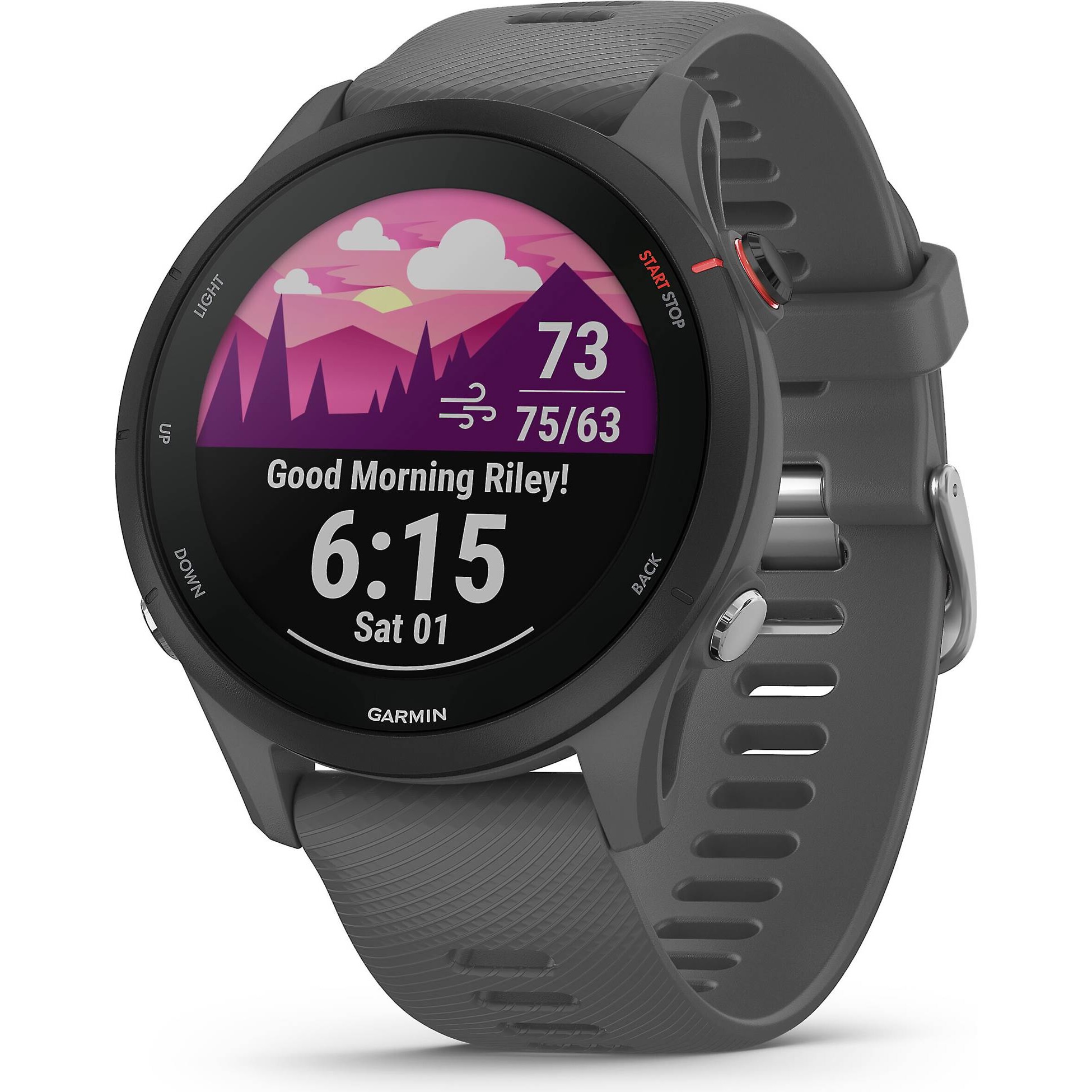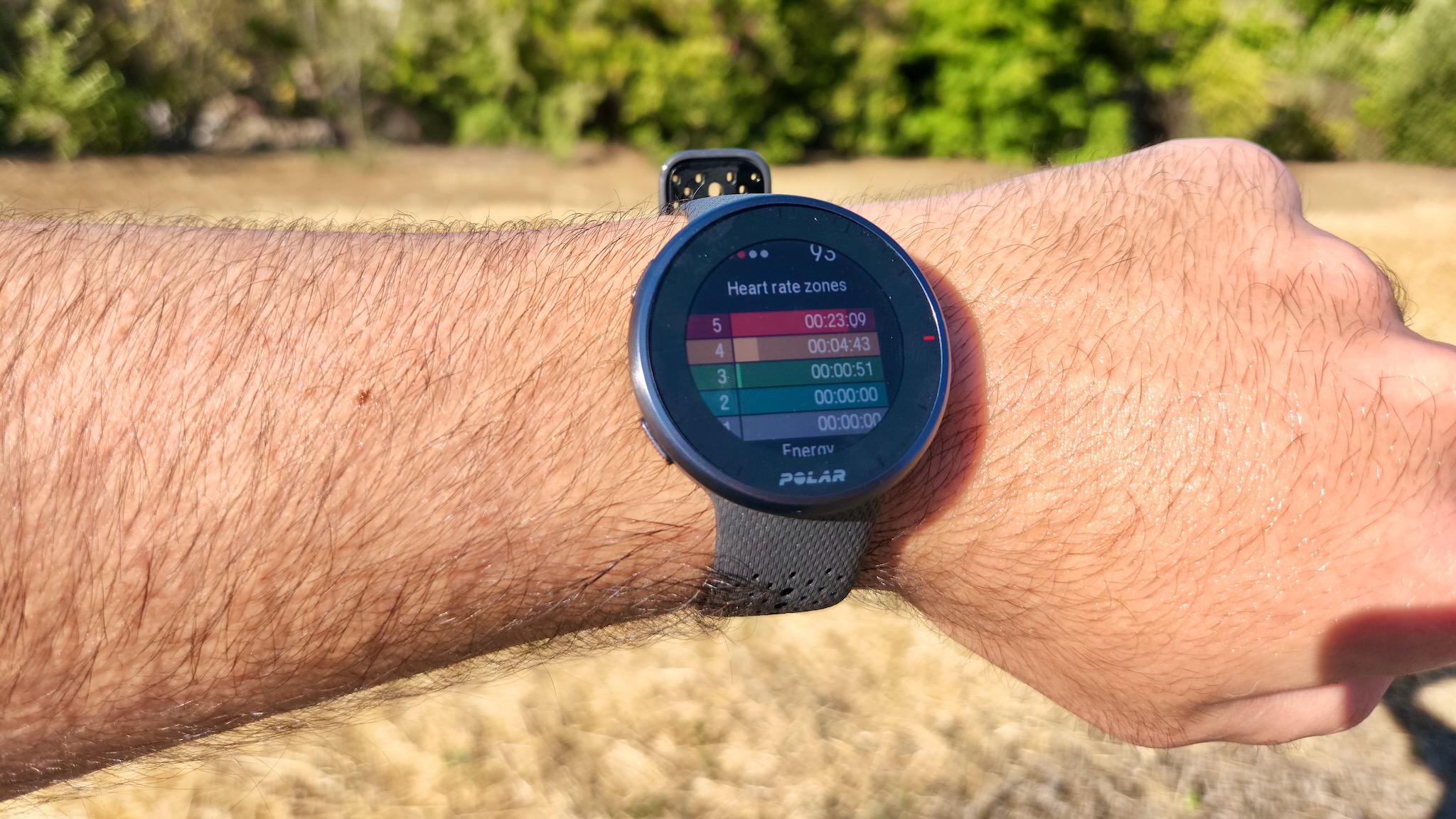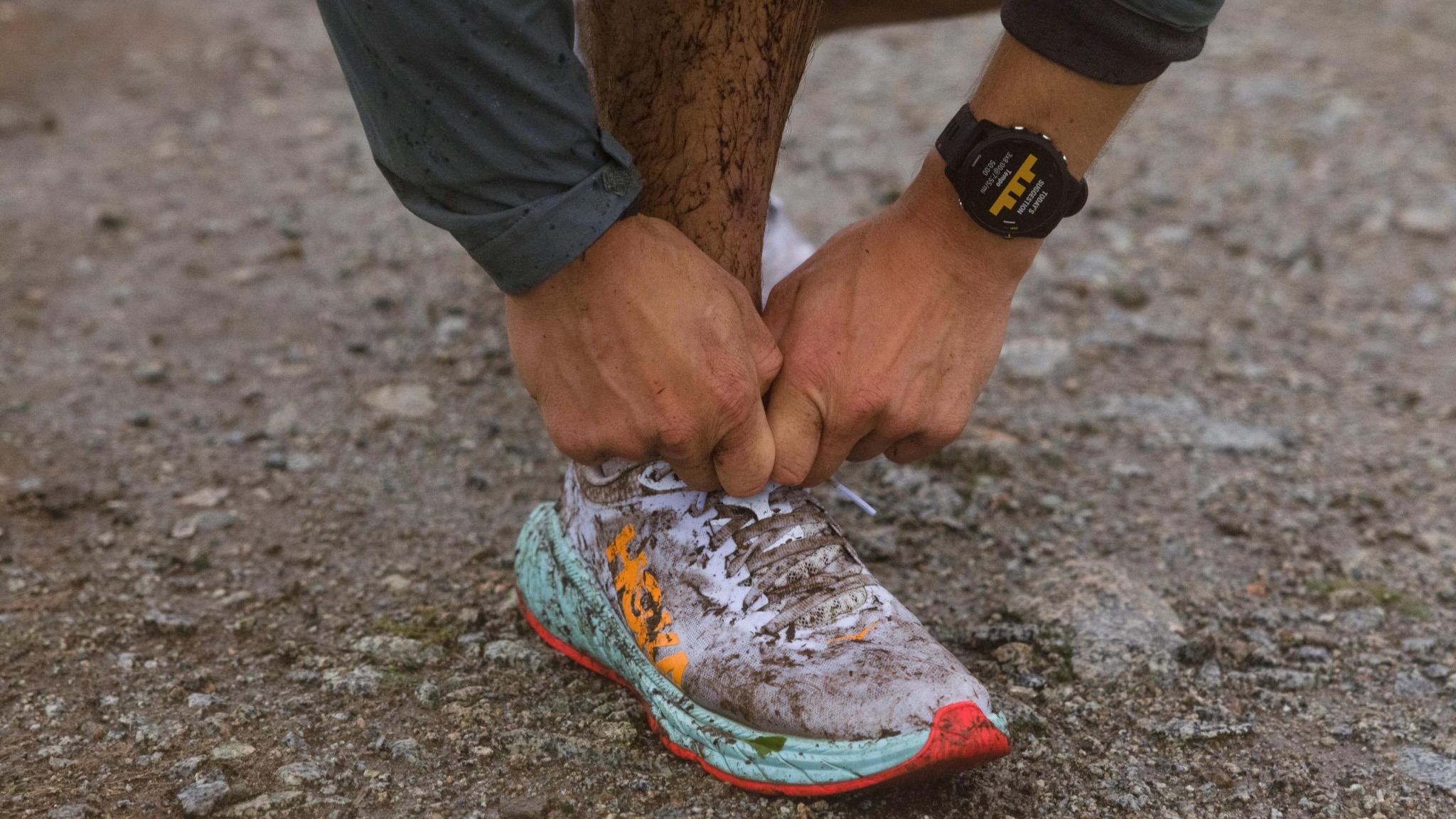Garmin Forerunner 255 vs. Polar Pacer Pro: Which should you buy?
We'll help you decide which of these running watches will get you to the starting line faster.

Foremost option for runners
Using the excellent Forerunner 245 as a jumping-off point, Garmin built the 255 with a better battery, new watch faces to make its data more accessible, and more accurate GPS tracking and HRM/Body Battery data. It's the running watch to beat.
Pros
- Two weeks of battery life
- Free Garmin Connect data
- Smaller 255S/ Music models
- All-Systems Multi-Band GPS NFC, SpO2, and temperature sensors
Cons
- Heavier design
- More expensive

Helping you pick up the pace
Polar designed a watch that's comfortable on your wrist, shows all the essential running data you need with just a few button taps, and can handle up to 35 GPS hours per charge — though the standard smartwatch mode drains faster than most.
Pros
- 35 hours of GPS tracking
- Free Polar Flow data
- Lighter design
- Assisted-GPS tracking
- More affordable
Cons
- No SpO2, NFC, music
- Dim display with thick bezel
- Shorter battery life overall
The Garmin Forerunner and Polar Pacer lineups sit atop the best running watches thanks to their wealth of free health data and metrics, generated from reliable hardware. Both the Garmin Forerunner 255 and Polar Pacer Pro would qualify as mid-range watches, with all of the core features of both brands but lacking some premium features. So which of the two is the better choice? It's a surprisingly competitive battle, but the winner depends on what kind of runner you are.
Garmin Forerunner 255 vs. Polar Pacer Pro: Neither's a looker

Both watches offer you a non-touch, memory-in-pixel (MIP) reflective color display that's perfectly visible in direct sunlight, but won't exactly wow you with brightness or color indoors.
The Forerunner 255 has a 1.3-inch, 260x260 display, while the Pacer Pro has a 1.2-inch, 240x240 display — which equates to the same pixels per inch. Visually, they're the same, with the Forerunner 255 adding a bit extra weight for a slight bump in display space.
They also share the same protections in their 5ATM water resistance and Gorilla Glass 3 scratch resistance.
It's hard to say if either watch looks "better" than the other. Both have thick black bezels around the actual display space, and MIP displays trade visual quality for battery life. The Polar Pacer Pro has an attractive aluminum strip around the edge, while the Forerunner 255 has a uniform plastic look.
The most important design difference is that the Forerunner 255 gives you two size options — the 1.1-inch 255S and the 1.3-inch 255 — while the Pacer Pro falls in-between them. The 255S is only 2 grams lighter than the Pacer Pro, likely because it squeezes in more sensors, and the display size may be a bit too compact for you.
Garmin Forerunner 255 vs. Polar Pacer Pro: Garmin wins the sensor and GNSS battle
The Polar Pacer Pro takes a straightforward approach to measuring your progress. It uses a heart rate monitor and barometric altimeter to measure your relative efforts, translating the data into info on heart rate zones, training load, and kcals burned. But you won't find any Pulse Ox data, which other watches use to measure your sleep recharge more accurately.
Get the latest news from Android Central, your trusted companion in the world of Android
With the Garmin Forerunner 255, you get the full suite of sensors, including blood oxygen and the Garmin Elevate v4 HRM found in the latest Garmins like the Venu 2 Plus and Instinct 2. This newest model not only measures standard heart rate, but also Heart Rate Variability (HRV), which helps calculate your stress levels and Body Battery recovery. The HRV Status watch face gives you actionable info on when you need to take a breath in the middle of a busy work day.
When we tested the Pacer Pro's HRM against Garmin Elevate, we found both were extremely close to one another in results across several training sessions. Whichever model you choose, it'll measure your fitness level equivalently.

In terms of GPS data, it's a more complicated question. The Pacer Pro's Precision Prime GPS matched Garmin in terms of measured steps and distance traveled, but our GPS maps with it did sometimes stray from where I was actually running, showing me inside of rivers or in the middle of traffic. It's more accurate than some cheap fitness trackers we've tested, and the assisted GPS helps it to get a satellite fix very quickly, but it isn't perfect.
With the Forerunner 255, you have two special tools at your disposal: All-Systems GNSS, and Multi-Band GPS, which you can use separately or together. All-Systems relies on GPS, GALILEO, and GLONASS simultaneously and compares results to give you the most accurate location data possible. Multi-Band GPS uses both L1 and L5 satellite frequencies at once, giving you more reliable data.
Together, these tools basically halve the 255's battery capacity from 30 to 16 hours, so most people will just rely on Garmin's standard GPS data. But if you need the most exact results possible, the newest Forerunner model gives you that option.
Garmin Forerunner 255 vs. Polar Pacer Pro: Features and software
| Category | Garmin Forerunner 255 | Polar Pacer Pro |
|---|---|---|
| Display | 1.3-inch Memory-in-Pixel non-touch (260x260) | 1.2-inch Memory-in-Pixel non-touch (240x240) |
| Materials | Fiber-reinforced polymer | Plastic case / aluminum bezel |
| Bands | 22mm quick-release | 20mm quick-release |
| Dimensions | 45.6 x 45.6 x 12.9mm | 45 x 45 x 11mm |
| Weight | 49g / 1.73oz | 41g / 1.45oz |
| Protection | 5ATM; Gorilla Glass 3 | 5ATM; Gorilla Glass 3 |
| Tracking | GPS, GALILEO, GLONASS, All-Systems Multi-Band GPS | GPS, GALILEO, GLONASS, Assisted GPS |
| Sensors | HRM, altimeter, compass, gyroscope, accelerometer, thermometer, pulse ox | HRM, altimeter, compass, accelerometer |
| Battery estimates | 14 days smartwatch mode; 30 hours GPS mode | 7 days smartwatch mode; 35 hours GPS mode |
| Music storage | Up to 500 songs; costs extra | 🚫 |
| Tap-to-pay | ✔️ | 🚫 |
Garmin sells four models of the Forerunner 255: the 255, 255S, 255 Music, and 255S Music. All four share the same features except for the 500-song storage that you get in exchange for a $50 surcharge. You can download playlists from Spotify, Deezer, or Amazon Music. Anyone who uses Tidal, Apple Music, or their own music files have no reason to buy the upgrade.
As for the 255S, its smaller size leads to a slight battery dip — losing two days in smartwatch mode or four hours of GPS tracking — and otherwise costs the same despite the smaller display. For those with smaller wrists, this "downgrade" will actually be an improvement.
The Polar Pacer Pro costs $50-$100 less depending on which model you pick. This will obviously appeal to more frugal runners, but if you spend the extra cash, you'll get tools like Garmin Pay, Pulse Ox, and music storage that Polar Pacer Pro lacks.
Both watches present their running data differently, both on the watch itself and through the companion app. Comparing Garmin Connect and Polar Flow would take a whole other article to discuss, so I'll highlight the main perks of both watches.

With Polar Pacer, you can take a Running Performance Test that has you run increasingly fast while maintaining a consistent heart rate until you can't keep up. Taking your calculated VO2 Max and data from weeks of running, Polar will give you FitSpark workout recommendations and tell you if you're currently over or undertraining based on past history.
Every day, you can scroll through watch faces showing data like your cardio load, nightly recharge, daily activity goal progress, heart rate, and recommended workout, so you can find the info without having to open the mobile app. During runs, you can customize the data you see with specific faces like Hill Splitter, Interval timer, Power, Strava segments, and more.
As for the Garmin Forerunner 255, it wakes you up with a Morning Report watch face that summarizes your Body Battery recharge, suggested workout, weather, and other customizable data so you can plan your day. You can also input your next race date and use the Race Widget to check how many days are left and get suggested training that takes the date into account.
Those are just the new features. Garmin has always offered a ridiculous amount of running data on its Forerunners, and the 255 includes the core list: performance condition and a visual race predictor, Pacepro splits during a race, and the training effect and estimated recovery time afterward. Not to mention all the Garmin essentials like stress, sleep, and women's health tracking — whereas Polar only focuses on sleep.
Garmin Forerunner 255 vs. Polar Pacer Pro: Which should you buy?

If you already use a Garmin or Polar watch, there arguably isn't a huge reason to switch things up. The Forerunner 255 makes some significant improvements in battery life and features over its predecessor, but allows you to build off of the running data you already have. The same applies with the Pacer Pro, which is a step up over older Polar running watches, especially in performance speed. If you switch brands, you'll have to spend weeks building up a running profile before you start to get accurate workout recommendations.
Both number among the best running watches available today, so you can't exactly go wrong with either. But you're here for a more definitive answer, right?
Well first, answer my initial question: What kind of runner are you? Are you someone that spends time tinkering with settings or pouring over your running data, and needs coaching during a race? Or do you mainly care about measuring your efforts and pace improvements, and don't need the same level of hand-holding?
The Garmin Forerunner 255 gives you all the data you could possibly want before, during, and after runs (or any cross-training you do). Polar is no slouch in terms of accessible and thorough running data; it just doesn't offer quite as many tools as Garmin. But for some runners, a more straightforward software experience will be better, whereas Forerunner's approach can feel a bit overwhelming for more casual runners. In that case, the Pacer Pro will make you feel enough like a pro, at a lower price.

For dedicated planners
Choose the Garmin Forerunner 255 if you want a digital coach that guides you step-by-step on the path to running greatness — or if you just want a watch with a few extra smarts like NFC payments and music storage.

For independent, data-driven runners
With the Polar Flow app, you get excellent running data that's accessible and crucial to improving your times. It's less detailed than Garmin Connect, but also much easier to navigate. That makes the Pacer Pro a better choice for many.

Michael is Android Central's resident expert on wearables and fitness. Before joining Android Central, he freelanced for years at Techradar, Wareable, Windows Central, and Digital Trends. Channeling his love of running, he established himself as an expert on fitness watches, testing and reviewing models from Garmin, Fitbit, Samsung, Apple, COROS, Polar, Amazfit, Suunto, and more.
